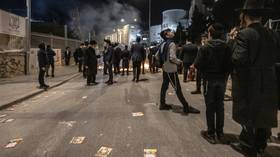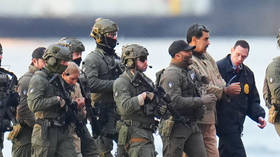
LONDON- A Virgin Atlantic (VS) flight from San Francisco (SFO) to London Heathrow (LHR) declared a medical emergency during its journey on September 1, 2025. The Boeing 787-9 Dreamliner requested paramedics to meet the aircraft upon arrival in London.
Flight VS42 operated normally across the Atlantic but faced an additional technical issue: the aircraft’s Auxiliary Power Unit (APU) was not operational. The crew notified Heathrow controllers that they would require a Ground Power Unit (GPU) on arrival, alongside medical assistance.
 Photo: Aero Icarus | Flickr
Photo: Aero Icarus | FlickrVirgin Atlantic Medical Emergency
The Dreamliner departed San Francisco International Airport (SFO) at 21:20 local time and landed at London Heathrow Airport (LHR) at 15:36 local time after 9 hours and 16 minutes in the air.
Before arrival, the crew sent a message to air traffic control confirming that medical personnel should be on standby for an onboard passenger emergency.
While the exact medical circumstances have not been detailed, such declarations are standard when passengers or crew require immediate care.
Heathrow Airport’s medical response teams are trained to meet aircraft on the stand and provide assistance as soon as the doors open.
 Photo: Virgin Atlantic
Photo: Virgin Atlantic APU Issue
Alongside the medical emergency, flight VS42 reported an APU malfunction. The Auxiliary Power Unit is a small engine located in the aircraft’s tail, used to provide power when the main engines are shut down.
It supplies electricity for cabin systems and is normally used to start the main engines during ground operations.
With the APU inoperative, the aircraft required an external Ground Power Unit (GPU) upon arrival. A GPU is a mobile generator positioned at the gate, supplying the necessary power to keep cabin lighting, air conditioning, and essential systems running after engine shutdown.
This ensures that passenger disembarkation and servicing of the aircraft proceed without interruption.
787 and APU Redundancy
The Boeing 787 is equipped with advanced electrical systems that provide more flexibility compared to earlier aircraft. Its design includes multiple small generators that can support aircraft systems even if the APU is not functioning.
This feature allows the 787 to continue long-haul flights under Extended-range Twin-engine Operational Performance Standards (ETOPS).
However, regulatory requirements still mandate that the APU must remain available for in-flight restart and emergency use.
In the case of VS42, the APU failure did not affect the transatlantic flight itself but required additional ground support once the aircraft reached Heathrow.
 Photo: Virgin Atlantic Boeing 787 -9 Dreamliner G-VNYL waiting to… | Flickr
Photo: Virgin Atlantic Boeing 787 -9 Dreamliner G-VNYL waiting to… | FlickrSafe Arrival at Heathrow
Despite the dual challenges of a medical emergency and an APU issue, Virgin Atlantic flight VS42 landed safely at London Heathrow at 15:36 local time.
Emergency medical teams met the aircraft as requested, and ground crews supplied GPU power to maintain aircraft systems during passenger disembarkation.
The incident highlights both the robust planning behind modern long-haul operations and the importance of coordinated response between flight crews, airport services, and medical teams.
Stay tuned with us. Further, follow us on social media for the latest updates.
Join us on Telegram Group for the Latest Aviation Updates. Subsequently, follow us on Google News
Virgin Atlantic 787 and British A350 Collided at London Heathrow
The post Virgin Atlantic San Francisco to London Flight with 787 Declares Emergency appeared first on Aviation A2Z.


















